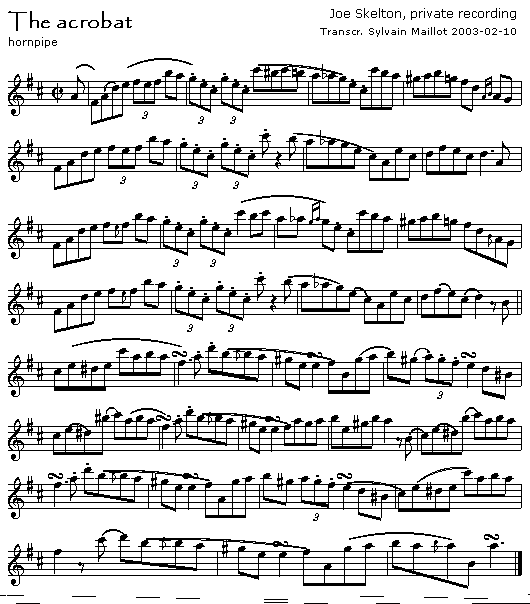A brief analysis by Sylvain Maillot, 10 February 2003

The acrobat (composed by James Scott Skinner)is the second hornpipe of the recording. For general remarks about the player and the style, see the introduction to the first, The locomotive.
Pretty much all that was said about The locomotive applies here also. The characteristic staccato triplets are found on arpeggios in Bar 2. This is typically violonistic, and not at all easy to play on the whistle. (If you don't believe me, try it yourself!) The accidentals are used more heavily than in the first hornpipe, and require a fair amount of half-holing. Clearly, the tin whistle is not the perfect instrument to play in this style, and it seems to me that Joe Skelton is pushing it to the limits. This is why I think you might want to study it closely, even if you are not fond of this particular type of tune.
As in the other hornpipe, JS breaks the monotony through a variety of different phrasings, achieved by tongued articulation (or absence thereof). This ranges from full legato (that's often where the half-holed accidentals take place) to staccato (e.g. triplets), through various intermediate patterns; among these, a typical one is that where notes are grouped in twos, contributing to the swing.
Sylvain Maillot, 10 February 2003